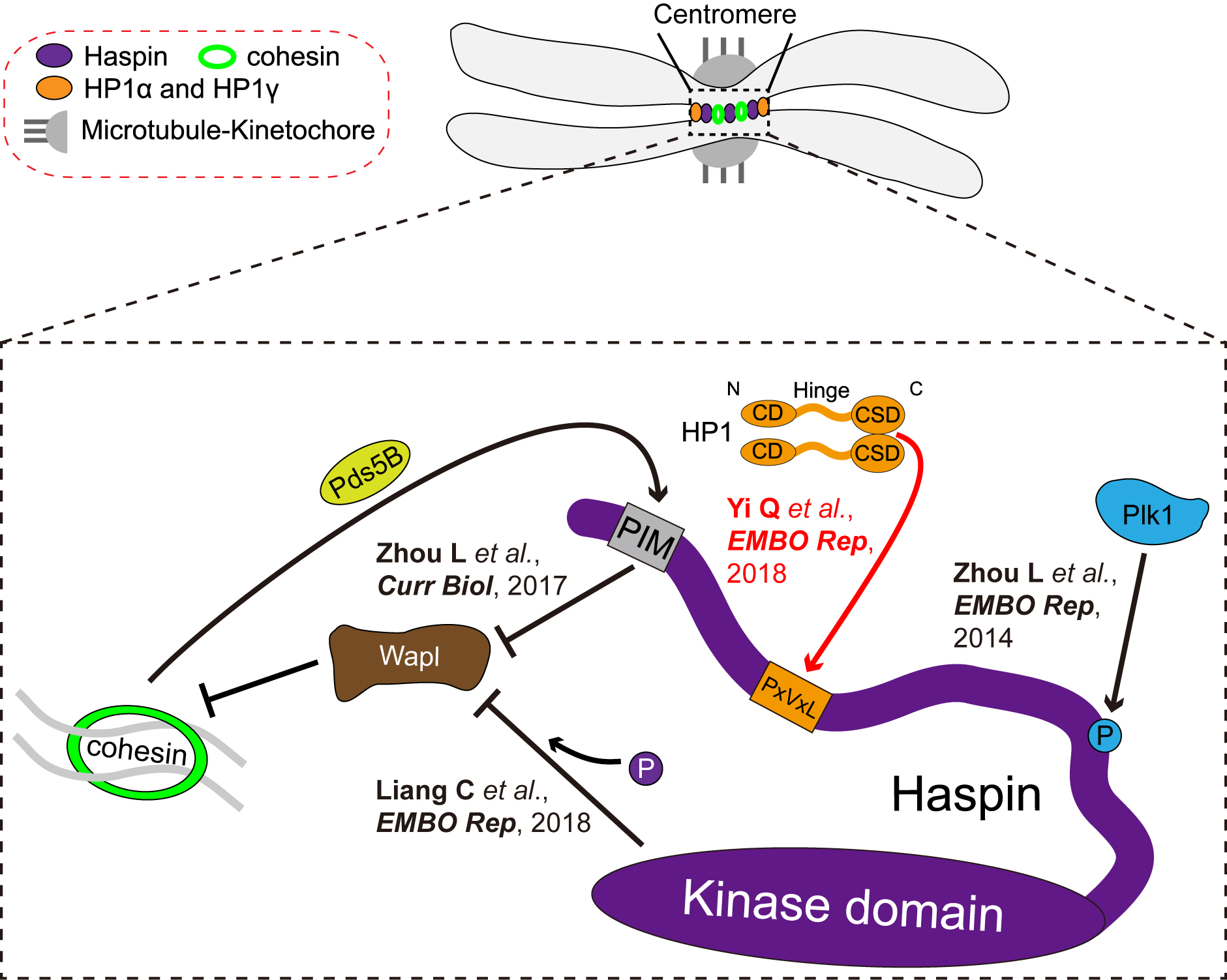On February 28, 2018, the Fangwei Wang Lab at Life Sciences Institute, Zhejiang University, published a research paper in EMBO Reports entitled "HP1 links centromeric heterochromatin to centromere cohesion in mammals".
Heterochromatin protein-1 (HP1) is a key component of heterochromatin. Reminiscent of the cohesin complex which mediates sister-chromatid cohesion, most HP1 proteins in mammalian cells are displaced from chromosome arms during mitotic entry, whereas a pool remains at the heterochromatic centromere region. The function of HP1 at mitotic centromeres remains largely elusive.
In this study, Professor Fangwei Wang and his students show that double knockout (DKO) of HP1α and HP1γ causes defective mitosis progression and weakened centromeric cohesion. While mutating the chromoshadow domain (CSD) prevents HP1α from protecting sister-chromatid cohesion, centromeric targeting of HP1α CSD alone is sufficient to rescue the cohesion defects in HP1 DKO cells. Interestingly, HP1-dependent cohesion protection requires Haspin, an antagonist of the cohesin-releasing factor Wapl. Moreover, HP1α CSD directly binds the N-terminal region of Haspin and facilitates its centromeric localization. The need for HP1 in cohesion protection can be bypassed by centromeric targeting of Haspin or inhibiting Wapl activity. Taken together, these results reveal a redundant role for HP1α and HP1γ in the protection of centromeric cohesion through promoting Haspin localization at mitotic centromeres in mammals.

Working model: Together with Pds5B, HP1 ensures the full occupancy of Haspin at mitotic centromeres, thereby enabling Haspin to prevent Wapl-Pds5B interaction and Wapl-mediated cohesin release.
Graduate students Qi Yi and Qinfu Chen are co-first authors of this study, and Professor Fangwei Wang is the corresponding author. This work was supported by grants from National Key Research and Development Program of China, the National Natural Science Foundation of China, the Natural Science Foundation of Zhejiang Province, the Fundamental Research Funds for the Central Universities, and the National Thousand Young Talents Award.
Link:http://embor.embopress.org/content/early/2018/02/28/embr.201745484



